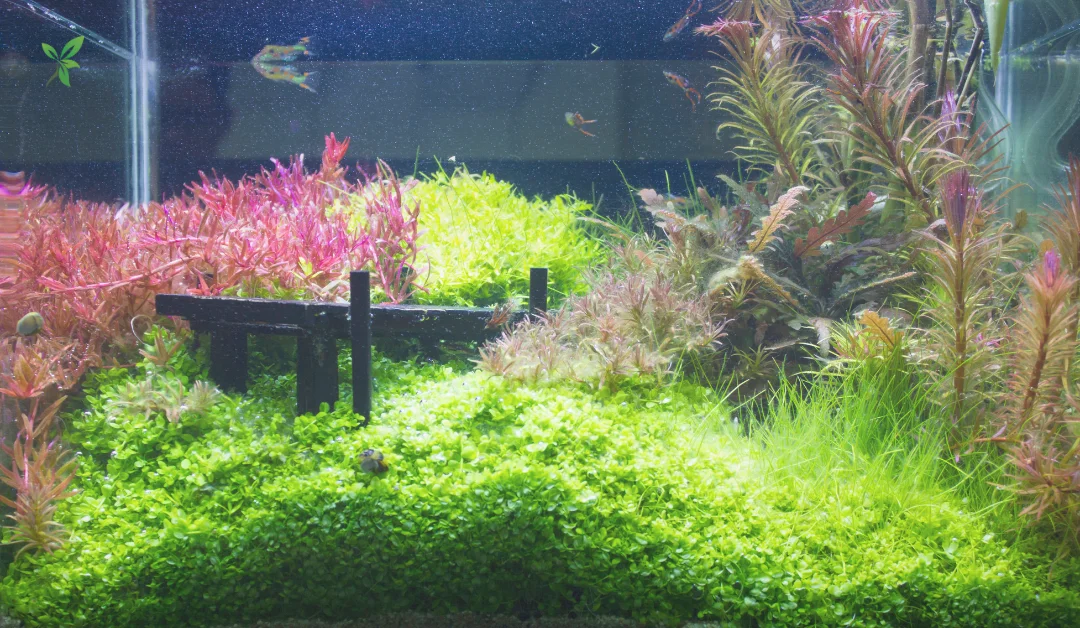Does Planted Tank Need a Sponge Filter? Step By Step Guide
When setting up a planted tank, many aquarium enthusiasts wonder whether a sponge filter is necessary. A planted tank is a beautiful, natural environment for fish and plants to thrive. However, to keep it healthy and clean, you need the right filtration system.
In this blog post, we will discuss whether a sponge filter is required for a planted tank, its benefits, and how it compares to other filtration options. We will also cover some tips on how to maintain a sponge filter in your planted tank.
What is a Sponge Filter?
A sponge filter is a simple, effective filtration device used in aquariums. It consists of a sponge attached to a tube, which is connected to an air pump. The air pump pushes air through the tube, creating bubbles that rise through the sponge. As water flows through the sponge, it traps dirt, debris, and waste, while beneficial bacteria grow on the sponge’s surface.
These bacteria help break down harmful substances like ammonia and nitrite, making the water safer for fish and plants.
Relevant Post: Do You Plant Water Plant in Little Basket | Easy Guide
How Does a Sponge Filter Work?
A sponge filter works by providing both mechanical and biological filtration.
- Mechanical Filtration: The sponge physically traps particles and debris, preventing them from floating in the water. This helps keep the tank clean and clear.
- Biological Filtration: The sponge provides a large surface area for beneficial bacteria to grow. These bacteria convert harmful ammonia into nitrite and then into less harmful nitrate. This process is essential for maintaining a healthy and stable aquarium environment.
Benefits of Using a Sponge Filter in a Planted Tank
Using a sponge filter in a planted tank offers several benefits:
1. Gentle Filtration
A sponge filter provides gentle filtration, which is important for a planted tank. Strong water currents can uproot plants or disturb delicate aquatic life. The sponge filter ensures that the water is filtered without creating strong currents, making it ideal for tanks with small fish, shrimp, or delicate plants.
2. Oxygenation
Sponge filters help oxygenate the water by creating bubbles. Oxygen is essential for fish, plants, and beneficial bacteria to survive. A well-oxygenated tank promotes healthy plant growth and reduces the risk of harmful substances building up in the water.
3. Easy to Maintain
Sponge filters are very easy to maintain. Cleaning the sponge is simple; you just remove it from the tank, rinse it in old tank water to remove debris, and then place it back in the tank. This process is quick and does not require any special tools or chemicals.
4. Affordable Option
Sponge filters are one of the most affordable filtration options available. They are inexpensive to purchase, and their low maintenance cost makes them a budget-friendly choice for aquarium owners.
5. Provides Biological Filtration
In a planted tank, biological filtration is crucial. The beneficial bacteria that grow on the sponge help maintain water quality by breaking down harmful substances. This process is vital for the health of both fish and plants.
Sponge Filter vs. Other Filtration Systems

When considering whether to use a sponge filter in your planted tank, it’s essential to compare it with other filtration systems.
1. Hang-on-Back (HOB) Filters
HOB filters are popular in many aquariums because they are easy to install and provide both mechanical and biological filtration. However, they create more water flow than sponge filters, which can be too strong for a planted tank. Additionally, HOB filters can be more expensive and require more maintenance.
Canister Filters
Canister filters are powerful and provide excellent mechanical, chemical, and biological filtration. They are ideal for large tanks or heavily stocked aquariums. However, they are more expensive and can create strong water currents, which may not be suitable for a planted tank with delicate plants or small fish.
3. Internal Filters
Internal filters are placed inside the tank and provide mechanical and biological filtration. They are more compact than canister filters but can still create strong water currents. Internal filters are more expensive than sponge filters and require more maintenance.
When to Use a Sponge Filter in a Planted Tank
Sponge filters are ideal for certain types of planted tanks:
1. Small Tanks
In small tanks, a sponge filter provides adequate filtration without taking up too much space. Its gentle flow is perfect for small tanks with delicate plants or small fish species.
2. Breeding Tanks
In breeding tanks, a sponge filter is an excellent choice because it provides gentle filtration that won’t harm fry (baby fish). The sponge’s surface also offers a place for the fry to hide and feed on microorganisms.
3. Shrimp Tanks
Shrimp are sensitive to water quality and strong currents. A sponge filter offers the gentle filtration needed to keep the water clean without stressing the shrimp.
4. Quarantine Tanks
Sponge filters are also suitable for quarantine tanks, where new or sick fish are kept temporarily. The filter provides clean water and helps maintain a stable environment while the fish recover or acclimate.
How to Maintain a Sponge Filter in a Planted Tank
Proper maintenance of your sponge filter is essential for keeping your planted tank healthy.
1. Rinse the Sponge Regularly
Rinse the sponge in old tank water (not tap water) every few weeks to remove debris and waste. Tap water can kill the beneficial bacteria on the sponge, so it’s important to use water from the tank.
2. Check the Air Pump
Ensure that the air pump is working correctly and producing enough bubbles to keep the water oxygenated. If the pump becomes weak, replace it to maintain proper filtration.
3. Replace the Sponge When Necessary
Over time, the sponge may become worn out or clogged. Replace it when it no longer filters water effectively. When replacing the sponge, try to keep some of the old sponge material to transfer beneficial bacteria to the new sponge.
Conclusion: Does Planted Tank Need a Sponge Filter?
A sponge filter is not always necessary for a planted tank, but it can be a beneficial addition. It provides gentle, effective filtration that is ideal for small tanks, breeding tanks, shrimp tanks, and quarantine tanks. While other filtration systems may be more powerful, a sponge filter offers a budget-friendly, low-maintenance option that supports both mechanical and biological filtration.
Relevant Post: How to Grow Plants Along a Vinyl Fence| Easy Guide
Whether you decide to use a sponge filter or another type of filtration system depends on your tank’s specific needs. However, if you’re looking for an affordable, easy-to-maintain, and plant-friendly option, a sponge filter could be the perfect choice for your planted tank.
FAQs
Q: Can I use a sponge filter alone in a planted tank?
A: Yes, a sponge filter can be used alone, especially in small or lightly stocked tanks. It provides both mechanical and biological filtration, making it a suitable choice for many planted tanks.
Q: How often should I clean my sponge filter?
A: It’s recommended to rinse the sponge in old tank water every 2-4 weeks, depending on the tank’s stocking level and how quickly the sponge becomes dirty.
Q: Can a sponge filter provide enough oxygen for my tank?
A: A sponge filter helps oxygenate the water, but you should monitor the oxygen levels, especially in heavily planted or stocked tanks, and consider additional aeration if needed.
By understanding the role of a sponge filter in a planted tank, you can make an informed decision about whether it is the right filtration option for your aquarium.




